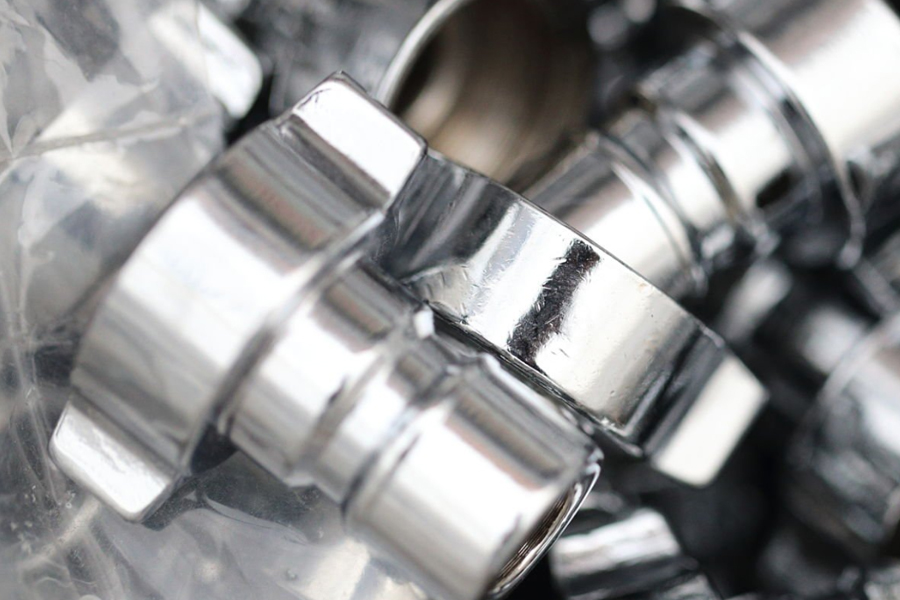As industrial requirements for acid and alkali resistance increase, chemical nickel plating, as an advanced surface treatment technology, has gradually attracted attention in the manufacturing industry. This process, which forms a uniform nickel layer on the metal surface through a chemical reaction, not only effectively resists chemical attack but also improves the durability of parts in various harsh environments. Specifically, CNC machined precision parts significantly enhance their corrosion resistance after chemical nickel plating, making them perform better in acidic and alkaline media. Furthermore, this technology not only improves product quality but also brings greater economic benefits and market competitiveness to manufacturing companies. In practical applications, many industries have begun to adopt chemical nickel plating to meet the growing demand for equipment performance and reliability.
Analysis of Chemical Nickel Plating Technology: The Importance of Improving the Acid and Alkali Resistance of CNC Machined Parts
Chemical nickel plating is an electroless nickel plating process that forms a nickel layer on the part surface through a chemical reaction. This surface treatment not only increases the thickness and uniformity of CNC machined parts but also effectively enhances their acid and alkali resistance. Parts are often exposed to chemical corrosion in harsh industrial environments, especially in these harsh environments. Electroless nickel plating significantly enhances the corrosion resistance of component surfaces, making them resistant to acid and alkali corrosion and extending their service life. For example, in industries such as petroleum and chemical engineering, parts with excellent acid and alkali resistance ensure stable equipment operation and reduce failure rates. Furthermore, this technology can be combined with other surface treatment processes to improve component strength and wear resistance while also making them more adaptable to complex operating environments. By selecting the right electroless nickel plating solution, manufacturers can ensure their products meet higher quality standards and maintain market competitiveness.

Advantages of Surface Treatment: How Electroless Nickel Plating Enhances Corrosion Resistance
Electroless nickel plating is an effective surface treatment technology that significantly improves the corrosion resistance of metal components. By depositing a uniform layer of nickel on the component surface, it forms a protective film that blocks the intrusion of corrosive substances. This protective film not only improves acid and alkali resistance but also enhances the durability of the parts in various harsh environments. For CNC machined precision parts, electroless nickel plating effectively reduces damage caused by rust and corrosion, thereby extending the product life. Furthermore, this process plays a significant role in reducing maintenance costs, enabling manufacturers to maintain economic benefits over the long term. By employing electroless nickel plating, manufacturers can ensure the reliability and stability of their products in a variety of applications.
Precision Manufacturing in Acid- and Alkali-Resistant Environments: Practical Applications of Electroless Nickel Plating
The application of electroless nickel plating in acid- and alkaline-resistant environments is crucial for many precision manufacturing industries. This technology significantly improves the corrosion resistance of parts by depositing a uniform layer of nickel on the substrate surface. This treatment is particularly useful in industries such as the chemical, pharmaceutical, and food processing industries, where it extends the service life of parts exposed to acidic or alkaline substances. For example, in chemical equipment, components treated with electroless nickel plating effectively resist highly corrosive media, thereby reducing failure rates. Furthermore, these treated parts require less frequent maintenance and replacement, thereby lowering overall operating costs. Therefore, opting for electroless nickel plating not only improves product quality but also offers economic benefits.
Reducing Production Costs: The Role of Electroless Nickel Plating in Improving Manufacturing Efficiency
Electroless nickel plating technology demonstrates significant cost benefits in the manufacturing industry. By applying a uniform layer of nickel to the surface of CNC-machined precision parts, the acid- and alkali-resistant parts can be significantly enhanced, directly reducing repair and replacement costs due to corrosion. Furthermore, electroless nickel plating offers high production efficiency, as it is suitable for complex shapes and small parts, effectively reducing subsequent processing time. Using this surface treatment technology, manufacturers can not only improve product quality but also further control production costs by reducing scrap rates and increasing the yield rate of finished products. Therefore, electroless nickel plating has become a key tool for enhancing the competitiveness of the manufacturing industry.
Electroless nickel plating is not only an effective surface treatment technology but also a key tool for improving the performance of CNC machined parts. By forming a uniform nickel layer on the surface of the part, it imparts excellent corrosion resistance to metal parts in acidic and alkaline environments. This technology is particularly important in industries such as the chemical and pharmaceutical industries, where equipment is frequently exposed to highly corrosive substances. Parts treated with electroless nickel plating can significantly extend their service life while reducing maintenance and replacement frequency, effectively controlling costs. Furthermore, as the manufacturing industry continues to pursue higher quality standards, electroless nickel plating will increasingly become a choice for improving product quality and market competitiveness.
